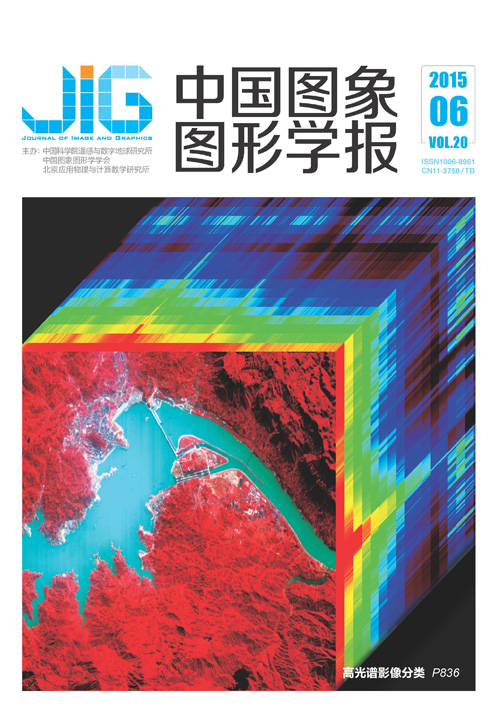
融合局部思想和协作表达的鲁棒分类
摘 要
目的 协作表达分类算法在人脸识别实验上表现出较好的性能,但其未考虑样本的局部特性,且算法只能处理测试样本中的噪声,未能有效处理训练样本集中的噪声.针对这两个问题,提出融合局部思想和协作表达的鲁棒分类算法.方法 一方面,在训练集上,通过奇异值分解SVD得到其有效表达,丢弃一些噪声;另一方面,算法考虑数据的局部相似性,以保持测试样本与其相邻训练样本之间的相似性.结果 本文算法能得到一个闭式(closed-form),可避免稀疏表示分类算法中由于迭代引起的高时间复杂度问题,在ORL、扩展YALEB和PIE人脸库上的识别率分别可达91.4%,93.8%和93.2%,与同类算法相比识别率有较大幅度地提高;实验结果验证了算法所得到的系数具有较高的判别能力.结论 算法将训练样本进行奇异值分解得到“干净”的训练样本,能在一定程度上消除噪声的影响,且在协作表达的基础上,考虑测试样本和与之相邻的训练样本的局部相似性,相比原始的协作表达分类算法有更好的稳定性和鲁棒性.
关键词
Locality constrained collaborative representation classification for robust classification
Lou Songjiang1, Zhao Xiaoming1, Yu Haitao2, Zhang Shiqing1(1.Institute of Image Processing & Pattern Recognition, Tai Zhou University, Taizhou 318000, China;2.College of Computer Science and Technology, Harbin Engineering University, Harbin 150001, China) Abstract
Objective Sparse representation is a popular topic in computer vision and pattern recognition. This process first expresses the test sample as a linear combination of training samples. Sparse representation also determines the class that minimizes deviation for classification purposes. Recent advances in representation-based classification methods show that collaborative representation, rather than sparsity, improves face recognition accuracy. Unlike sparse representation, collaborative representation is computationally efficient and recognizes faces well. However, this performance degrades sharply if the training samples are corrupted by noise. This noise is very common in practical applications and causes side effects that destabilize classification results. Collaborative representation also ignores data locality, which is important. To address these two problems, a new algorithm for locality-constrained collaborative representation classification is proposed in this paper for robust categorization. Method Singular value decomposition is performed to remove noise in the training samples, and the training samples are approximated as the clean training samples. Local similarity is employed to maintain the similarity between the test sample and its adjacent training samples. Locality is an important characteristic in the reduction and classification of dimensionality because locality results in sparsity but not vice versa. Result The proposed algorithm can obtain a closed-form solution through collaborative representation and avoid the dilemma of expensive computations in sparse representation. This algorithm also considers local similarity. Experiments are conducted on ORL, Extended YALEB, and PIE face databases. Results demonstrated that the obtained coefficients display much discriminative power and that the proposed algorithm performs well. Moreover, recognition rates reach 91.4%, 93.8%, and 93.2% respectively. Conclusion The proposed algorithm simply and feasibly reduces the effect of noise in the training samples and obtains “clean” samples for representation-based classification. The proposed method measures dissimilarity by applying locality. This technique also suppresses the corresponding weight coefficient for distant samples while emphasizing the role of samples that are similar to the test sample in the training set. The test samples are represented as well. Experimental results demonstrate the feasibility and effectiveness of the algorithm. Thus, this method is a new technique for representation-based classification, such as face recognition, in that the side effects of noise on classification can be eliminated. This elimination is almost impossible for conventional methods.
Keywords
|



 中国图象图形学报 │ 京ICP备05080539号-4 │ 本系统由
中国图象图形学报 │ 京ICP备05080539号-4 │ 本系统由